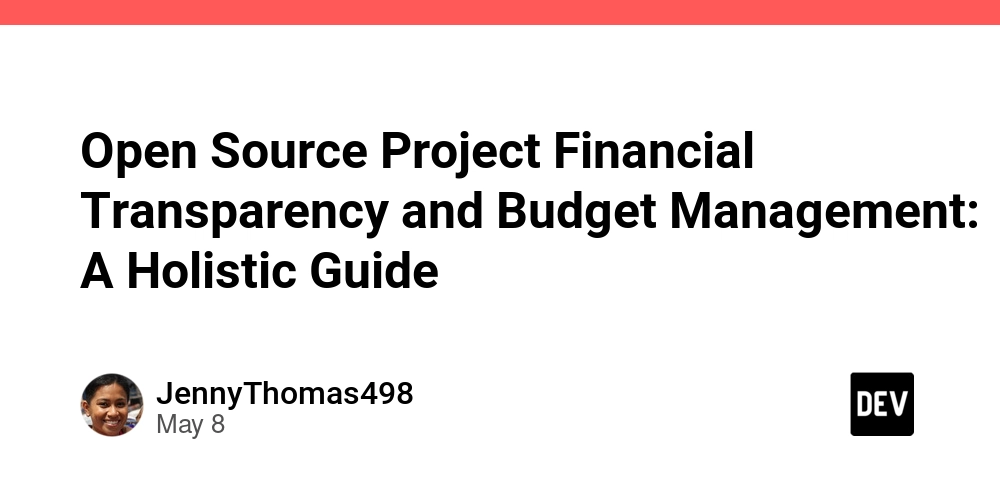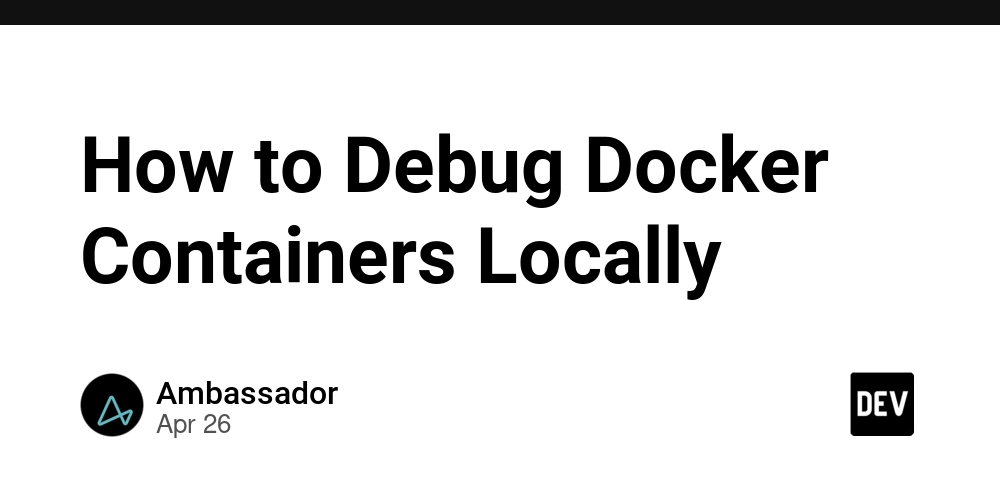Open Source Project Financial Transparency and Budget Management: A Holistic Guide
Abstract This post explores the evolving landscape of open source project financial transparency and budget management. It covers the historical context, core concepts, and innovative funding methods such as donations, sponsorships, grants, crowdfunding, and NFT tokenization. We explain how blockchain integration, licensing models, and emerging technologies are transforming open source funding. Practical use cases, challenges, and future trends are discussed, giving developers, maintainers, and technical contributors a detailed guide to building sustainable, transparent financial systems for open source projects. Introduction Open source projects have revolutionized the software development world, but maintaining and scaling them financially is now more critical than ever. With limited financial resources and a collaborative development ethos, projects need robust budget management strategies combined with unwavering financial transparency. These fundamentals not only build trust among community members but also attract new funding channels—ranging from traditional donations and sponsorships to modern blockchain-based mechanisms such as NFT tokenization. In this post, we will explore: The historical backdrop and context of open source funding. The core components of budgeting and transparency in projects. Practical use cases for innovative funding and budgeting methods. Existing challenges and limitations. The future outlook, including emerging blockchain, NFT, and AI integrations. By interweaving technical insights with real-world examples, this guide aims to provide a detailed resource for anyone interested in sustaining open source software through effective financial management. Background and Context Historical Evolution of Funding Models The open source movement has its roots in the early days of software collaboration. Initially, projects thrived thanks to voluntary contributions and a spirit of community sharing. However, as open source software became integral to businesses and advanced infrastructures, the need for consistent funding emerged. Historically, funding models have evolved through: Donations: Voluntary contributions from users and community supporters. Sponsorships: Corporations supporting projects aligned with their business interests. Grants and Crowdfunding: Structured funding campaigns enabling specific project milestones. NFT Tokenization: Recent models that leverage blockchain to tokenize digital assets, creating additional revenue streams. This progression—from volunteer-led support to professional financial management—has necessitated enhanced governance and transparent accounting practices. Defining Key Concepts Understanding the methodology behind open source project budget management and financial transparency is crucial. Financial Transparency: Regular, open publication of financial reports builds trust, enabling community members and funders to see exactly how money is allocated. Budget Management: Systematic planning, tracking, and distribution of project funds to meet both recurring and new expenses. This includes tracking developer compensation, infrastructure costs, and licensing fees. These elements ensure that projects remain accountable and can adapt to varied funding environments. Ecosystem Integration and Licensing Considerations The legal framework in open source projects plays a pivotal role in financial management. For instance, the Copyleft Licenses Ultimate Guide provides important insights into how licensing shapes revenue generation and accountability. Open source licensing not only protects contributions but can also guide funding channels, ensuring that open collaboration is sustained. Moreover, blockchain technologies and NFT integrations have emerged as game-changers for open source funding. NFT collections like the Zora NFT Collection and the The Sandbox Assets NFT Collection illustrate how decentralized finance and tokenization create new financial avenues while ensuring immutable, transparent tracking of transactions. Core Concepts and Features To build resilient and sustainable open source projects, it is essential to understand and implement robust financial transparency and precise budget management practices. 1. Comprehensive Financial Planning Open source project budget management starts with detailed financial planning. Projects need to forecast: Developer compensation and incentives. Infrastructure and hosting expenses. Licensing fees and legal expenses. Costs related to community events and outreach programs. Creating an itemized budget plan ensures that expenses are understandable, scalable, and adaptable to new funding streams. 2. Transparent Accounting Systems Utilizing modern accounting tools—from simple spreadsheets to comprehensive ERP systems—provides real-time access to project finances. Transparent acco

Abstract
This post explores the evolving landscape of open source project financial transparency and budget management. It covers the historical context, core concepts, and innovative funding methods such as donations, sponsorships, grants, crowdfunding, and NFT tokenization. We explain how blockchain integration, licensing models, and emerging technologies are transforming open source funding. Practical use cases, challenges, and future trends are discussed, giving developers, maintainers, and technical contributors a detailed guide to building sustainable, transparent financial systems for open source projects.
Introduction
Open source projects have revolutionized the software development world, but maintaining and scaling them financially is now more critical than ever. With limited financial resources and a collaborative development ethos, projects need robust budget management strategies combined with unwavering financial transparency. These fundamentals not only build trust among community members but also attract new funding channels—ranging from traditional donations and sponsorships to modern blockchain-based mechanisms such as NFT tokenization.
In this post, we will explore:
- The historical backdrop and context of open source funding.
- The core components of budgeting and transparency in projects.
- Practical use cases for innovative funding and budgeting methods.
- Existing challenges and limitations.
- The future outlook, including emerging blockchain, NFT, and AI integrations.
By interweaving technical insights with real-world examples, this guide aims to provide a detailed resource for anyone interested in sustaining open source software through effective financial management.
Background and Context
Historical Evolution of Funding Models
The open source movement has its roots in the early days of software collaboration. Initially, projects thrived thanks to voluntary contributions and a spirit of community sharing. However, as open source software became integral to businesses and advanced infrastructures, the need for consistent funding emerged.
Historically, funding models have evolved through:
- Donations: Voluntary contributions from users and community supporters.
- Sponsorships: Corporations supporting projects aligned with their business interests.
- Grants and Crowdfunding: Structured funding campaigns enabling specific project milestones.
- NFT Tokenization: Recent models that leverage blockchain to tokenize digital assets, creating additional revenue streams.
This progression—from volunteer-led support to professional financial management—has necessitated enhanced governance and transparent accounting practices.
Defining Key Concepts
Understanding the methodology behind open source project budget management and financial transparency is crucial.
- Financial Transparency: Regular, open publication of financial reports builds trust, enabling community members and funders to see exactly how money is allocated.
- Budget Management: Systematic planning, tracking, and distribution of project funds to meet both recurring and new expenses. This includes tracking developer compensation, infrastructure costs, and licensing fees.
These elements ensure that projects remain accountable and can adapt to varied funding environments.
Ecosystem Integration and Licensing Considerations
The legal framework in open source projects plays a pivotal role in financial management. For instance, the Copyleft Licenses Ultimate Guide provides important insights into how licensing shapes revenue generation and accountability. Open source licensing not only protects contributions but can also guide funding channels, ensuring that open collaboration is sustained.
Moreover, blockchain technologies and NFT integrations have emerged as game-changers for open source funding. NFT collections like the Zora NFT Collection and the The Sandbox Assets NFT Collection illustrate how decentralized finance and tokenization create new financial avenues while ensuring immutable, transparent tracking of transactions.
Core Concepts and Features
To build resilient and sustainable open source projects, it is essential to understand and implement robust financial transparency and precise budget management practices.
1. Comprehensive Financial Planning
Open source project budget management starts with detailed financial planning. Projects need to forecast:
- Developer compensation and incentives.
- Infrastructure and hosting expenses.
- Licensing fees and legal expenses.
- Costs related to community events and outreach programs.
Creating an itemized budget plan ensures that expenses are understandable, scalable, and adaptable to new funding streams.
2. Transparent Accounting Systems
Utilizing modern accounting tools—from simple spreadsheets to comprehensive ERP systems—provides real-time access to project finances. Transparent accounting helps maintain credibility by making financial data publicly accessible via dashboards and periodic financial statements. Tools such as Open Collective and GitHub Sponsors are actively being used in the open source community to track donations and expenses easily.
Key benefits include:
- Real-Time Tracking: Instant insights into fund inflow and expenditure.
- Immutable Records: Integration with blockchain ensures transaction data cannot be altered.
- Enhanced Trust: Open publication of income statements, balance sheets, and cash flow reports promotes community confidence.
3. Integration with Blockchain and NFT Tokenization
Modern open source projects are exploring the integration of blockchain technologies for enhanced transaction verification and trust. By using blockchain:
- Security and Trust: Each transaction is recorded on an immutable ledger.
- NFT-Based Funding: Tokenizing digital assets such as code snippets or unique project assets creates an alternative revenue stream. See examples like the Zora NFT Collection.
- Hybrid Funding Models: Combining cryptocurrency-based funding with traditional financial models helps stabilize revenue streams.
4. Community Involvement and Governance
Community engagement in financial decisions is key to the democratic spirit of open source. Incorporating mechanisms such as public voting on budget decisions fosters:
- Shared Responsibility: Every contributor becomes invested in the project’s future.
- Increased Transparency: Open discussions regarding fund allocation reduce conflicts and improve financial planning.
- Collective Decision-Making: Practices such as community voting during budgeting sessions help align financial management with community priorities.
5. Legal and Licensing Frameworks
Legal adherence is crucial in funding open source projects. Licensing frameworks, as detailed in the Copyleft Licenses Ultimate Guide, ensure that financial gains are balanced with the open community values. The alignment of funding and licenses protects intellectual property while encouraging collaboration.
Applications and Use Cases
Let’s consider a few practical examples showcasing how these financial strategies are implemented in real projects.
Use Case 1: Developer Community Sustainability
Large open source projects, especially those hosted on platforms like GitHub, have adopted transparent funding methods to ensure developers receive fair compensation. For instance:
- Regular Disbursements: Through platforms like GitHub Sponsors, developers receive periodic payments based on contributions.
- Community Voting: Budget allocations for critical project areas are decided democratically, ensuring every voice is acknowledged.
- Transparent Reporting: Detailed public reports help maintain donor trust by showing exact expense details.
Implementing these practices prevents burnout, encourages consistent contributions, and builds a resilient developer community.
Use Case 2: Blockchain Integration and NFT Tokenization
Innovative open source initiatives have pushed the envelope by integrating blockchain and NFT technologies into their financial models:
- Tokenizing Digital Assets: Projects may issue NFTs related to their unique code, documentation, or digital art. For example, in projects leveraging the Zora NFT Collection, stakeholders can gain fractional ownership, encouraging long-term investment.
- Decentralized Funding Campaigns: Blockchain-backed funding provides a secure, immutable, and distributed ledger that can support decentralized funding efforts.
- Hybrid Models: Projects combine traditional grants and sponsorships with blockchain innovations to diversify their revenue, ensuring financial stability even in volatile markets.
Use Case 3: Corporate Sponsorship and Cross-Sector Partnerships
In today’s ecosystem, many corporations influence open source projects by partnering and providing long-term sponsorship:
- Infrastructure Support: Corporations sponsor projects to cover infrastructure costs such as servers and hosting.
- Scaling and Innovation: By providing technical expertise and additional funds, sponsors help projects scale rapidly while maintaining transparency.
- Market Expansion: Partnerships widen project reach, and well-managed financial dashboards, integrating blockchain technology, ensure each sponsorship dollar is tracked meticulously.
Table: Open Source Funding Use Cases
| Use Case | Key Elements | Main Benefits |
|---|---|---|
| Developer Community Sustainability | Regular payments, community voting, transparent financial reports | Prevents burnout, builds trust, improves contributor morale |
| Blockchain Integration and NFT Tokenization | Tokenization, immutable ledger, hybrid funding models | Diversifies revenue, provides new investment avenues, ensures secure transactions |
| Corporate Sponsorship and Partnerships | Infrastructure support, scaling expertise, enhanced market reach | Drives innovation, fosters technical partnerships, expands project visibility |
Challenges and Limitations
Despite the promising integration of modern technology and community financial governance, several challenges persist in open source project funding.
Technical Challenges
- Complex Accounting Systems: As projects grow, managing complex transactions across multiple platforms (traditional ERP systems and blockchain) becomes more challenging.
- Data Fragmentation: Integrating traditional and blockchain systems can create fragmentation; ensuring data consistency is a technical hurdle that must be overcome.
- Security Concerns: Even with blockchain’s inherent security, vulnerabilities in smart contract code or system integrations can lead to financial breaches.
Adoption and Regulatory Hurdles
- Resistance to Change: Many traditional open source communities may resist the adoption of formal financial systems, preferring old-fashioned, informal models.
- Expertise Gap: There is often a lack of financial experts who understand both open source and blockchain technology. Training or hiring qualified professionals can be expensive.
- Regulatory Uncertainty: Navigating the legal landscape around digital assets and cryptocurrency transactions poses a risk that can complicate the integration of modern funding models.
Systemic and Financial Limitations
- Inconsistent Revenue Streams: Relying solely on donations and sponsorships can lead to unpredictable funding. This inconsistency affects long-term planning.
- Resource Allocation Disagreements: Without a robust, democratically guided framework, misallocation of funds might result in internal conflicts.
- Volunteer Burnout: Although transparency boosts community morale, overreliance on volunteer contributions without stable remuneration can lead to exhaustion.
Bullet List: Key Challenges
- Complex, multi-platform accounting integrations
- Security vulnerabilities in blockchain implementation
- Resistance from traditional open source communities
- Legal and regulatory uncertainties
- Inconsistent revenue flows and resource allocation issues
Future Outlook and Innovations
The Rise of Decentralized Finance and Blockchain
The financial landscape for open source projects is set to benefit immensely from decentralized finance (DeFi) innovations. Blockchain platforms will increasingly allow fractional ownership, secure peer-to-peer transactions, and real-time financial tracking. This ensures every transaction is auditable and irreversible.
Fusion with Artificial Intelligence
Artificial Intelligence (AI) is expected to revolutionize budget management. With AI-driven analytics:
- Enhanced Forecasting: Projects can predict revenue trends and allocate funds more efficiently.
- Anomaly Detection: AI will help spot inefficiencies or fraudulent activities in real time.
- Optimized Decisions: Dynamic decision-making tools will assist managers in adjusting budgets and reallocating resources on the fly.
Evolving Licensing and Funding Models
The interplay between licensing models and funding is set to become even more complex and interconnected. As projects adopt new funding channels like NFT tokenization, licensing agreements will need to evolve. The ongoing updates to guides like the Copyleft Licenses Ultimate Guide ensure that intellectual property is protected while enabling innovative revenue models.
Increased Corporate and Institutional Involvement
Corporations are expected to deepen their involvement in open source initiatives. By incorporating open source sponsorship platforms (such as Open Source Sponsorship) into their corporate social responsibility programs, companies can:
- Provide consistent funding.
- Drive integration of technology and standards.
- Enhance overall project sustainability.
Community-Driven Innovation
The future belongs to community-driven projects that embrace financial innovations and maintain a clear, open dialogue about budgeting. Decentralized decision-making models, using blockchain and even platforms discussed on Dev.to and Dev.to’s articles on open source funding, will empower communities to self-manage, keep control over funds, and use innovative models to drive growth.
Summary
In this post, we have explored the multifaceted world of open source project financial transparency and budget management. We started by establishing the historical evolution of funding models—from donations and sponsorships to blockchain-based NFT tokenization and hybrid funding approaches. We defined key terms such as transparent governance, comprehensive budgeting, and community involvement.
Key points include:
- Financial Transparency: Implementing real-time dashboards, immutable blockchain ledgers, and open financial reporting significantly builds trust.
- Budget Management: Robust planning and scalable systems ensure efficient use of limited funds.
- Blockchain Integration and NFT Tokenization: These modern methods open new vistas for revenue generation, ensuring both security and innovation in funding.
- Community Involvement: Democratic decision-making in budgeting reinforces the open source ethos and enhances sustainability.
- Challenges and Future Innovations: While challenges like data fragmentation, security, and regulatory hurdles exist, emerging technologies like decentralized finance and AI-fueled analytics promise to pave a shiny path forward.
By adopting these practices, projects can not only secure the financial support necessary for continuous innovation but also create a transparent, accountable ecosystem that benefits all stakeholders.
For those interested in delving deeper into the technical and legal side of open source financial management, additional resources such as the Copyleft Licenses Ultimate Guide or insights on Open Source Sponsorship provide valuable guidance. Furthermore, exploring discussions on modern decentralized models on platforms like Open Collective can offer practical insights into managing both traditional and blockchain-enabled funds.
In conclusion, a reliable financial infrastructure—built on transparency, balanced budgeting, and community engagement—is essential for sustaining open source projects. As funding models continue to evolve with technology, open source maintainers and developers must embrace these practices to drive long-term innovation and ensure that their projects remain dynamic, secure, and aligned with the spirit of open collaboration.
For those seeking additional insights on related topics, you might also find these articles interesting: Unveiling Mozilla Public License 2.0: A Game Changer in Open Source Licensing and Navigating the Financial Landscape: Open Source Project Funding Tools.
Embracing transparent and innovative financial management is not just about keeping the books balanced—it is about empowering communities, building trust, and ensuring that open source projects continue to drive technological advancement for years to come.









































































































































































![[The AI Show Episode 146]: Rise of “AI-First” Companies, AI Job Disruption, GPT-4o Update Gets Rolled Back, How Big Consulting Firms Use AI, and Meta AI App](https://www.marketingaiinstitute.com/hubfs/ep%20146%20cover.png)










































































































































































































































































_Aleksey_Funtap_Alamy.jpg?width=1280&auto=webp&quality=80&disable=upscale#)
_Sergey_Tarasov_Alamy.jpg?width=1280&auto=webp&quality=80&disable=upscale#)















































































































![Apple Foldable iPhone to Feature New Display Tech, 19% Thinner Panel [Rumor]](https://www.iclarified.com/images/news/97271/97271/97271-640.jpg)
![Apple Developing New Chips for Smart Glasses, Macs, AI Servers [Report]](https://www.iclarified.com/images/news/97269/97269/97269-640.jpg)
![Apple Shares New Mother's Day Ad: 'A Gift for Mom' [Video]](https://www.iclarified.com/images/news/97267/97267/97267-640.jpg)
![Apple Shares Official Trailer for 'Stick' Starring Owen Wilson [Video]](https://www.iclarified.com/images/news/97264/97264/97264-640.jpg)




































































































